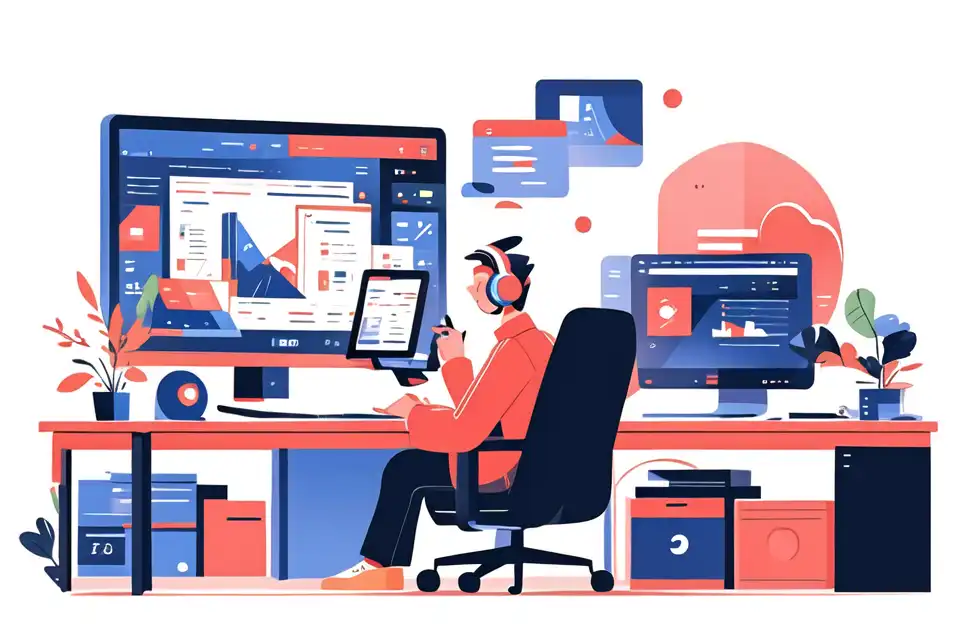Budgeted Cost of Work Performed BCWP for Design and User Experience Teams
Explore budgeted cost of work performed bcwp for design and user experience teams, ensuring efficiency and successful project management outcomes.
Try Lark for Free
The effective management of design and user experience projects hinges on the ability to measure and monitor progress accurately while maintaining cost efficiency. BCWP, as a performance measurement technique, plays a pivotal role in this endeavor. By delving into the principles and applications of BCWP within the context of these specialized teams, organizations and practitioners can unlock valuable insights to propel their projects to success.
Leverage Lark for project management within your team.
Understanding budgeted cost of work performed (bcwp)
Unveiling the BCWP Methodology
At its core, BCWP is a metric utilized to evaluate the scheduled cost of work completed within a specific timeframe. This methodology involves measuring the value of the work accomplished against the approved budget, enabling project managers to assess the efficiency and progression of their endeavors.
Calculating BCWP for Design and User Experience Teams
Within the realm of design and user experience, the calculation of BCWP entails aligning the anticipated costs of project components with the actual value of work completed. This yields a quantitative assessment of the team's productivity and resource utilization, offering invaluable insights for streamlined project management.
Relevance in Project Management
For design and user experience teams, the application of BCWP extends beyond financial assessments. It serves as a comprehensive performance indicator, spotlighting the team's adherence to project schedules and budgetary constraints. This, in turn, enables proactive decision-making and facilitates agile adjustments to optimize project outcomes.
Benefits of bcwp for design and user experience teams
Enhanced Decision-making Precision
By leveraging BCWP, design and user experience teams gain access to accurate progress metrics, empowering them to make data-driven decisions and allocate resources efficiently. This precision in decision-making fosters an environment of informed project management, aligning actions with the overarching project objectives.
Proactive Identification of Variances
The utilization of BCWP facilitates the early identification of potential cost and schedule variances within design and user experience projects. This proactive approach empowers teams to pinpoint deviations from the planned trajectory, enabling timely interventions to realign workflows and resource allocations.
Reliable Performance Evaluation
BCWP serves as a dependable yardstick for evaluating the performance of design and user experience teams. With quantifiable metrics at their disposal, stakeholders can gauge the team's productivity, progress, and value delivery, laying the foundation for continuous improvement initiatives.
Steps to implement bcwp for design and user experience teams
Step 1: Assessing Existing Project Management Processes
Initiate the integration of BCWP by conducting a thorough assessment of current project management processes within the design and user experience domains. Identify areas where BCWP can seamlessly complement existing methodologies to enhance performance tracking and cost efficiency.
Step 2: Integration of BCWP Measurement Techniques
Subsequently, focus on integrating BCWP measurement techniques into the project management framework of design and user experience teams. Tailor these techniques to suit the dynamic and iterative nature of the teams' activities, ensuring that the methodology aligns with their specific requirements.
Step 3: Utilizing Specialized Software and Tools
The seamless implementation of BCWP necessitates the adoption of specialized software and tools designed to facilitate the tracking and analysis of BCWP metrics within design and user experience projects. This enables efficient measurement and reporting of progress, offering actionable insights for informed decision-making.
Step 4: Establishing Communication and Training Procedures
To ensure the successful integration of BCWP, establish clear communication channels and comprehensive training protocols for design and user experience team members. Foster an understanding of BCWP methodology and its significance, encouraging active participation and commitment from all stakeholders.
Step 5: Continuous Monitoring and Refinement
As the implementation progresses, prioritize the ongoing monitoring and refinement of BCWP within design and user experience teams. Cultivate a culture of continuous improvement and adaptability, where insights from BCWP measurements drive strategic adjustments and operational enhancements.
Learn more about Lark Project Management for Teams
Common pitfalls and how to avoid them in design and user experience teams
Misinterpretation of BCWP Metrics
A common pitfall in the integration of BCWP relates to misinterpretations of its metrics within the context of design and user experience projects. It is crucial to foster a contextual understanding of these metrics, ensuring that they align with the unique characteristics of these teams' activities.
Alignment with Dynamic Processes
The dynamic and iterative nature of design and user experience activities can pose challenges in aligning BCWP measurements with ongoing workflows. To address this, adaptive approaches that flexibly account for evolving project scopes and requirements are imperative to ensure accurate BCWP assessments.
Overcoming Resistance to Change
Resistance to change and a lack of buy-in from design and user experience team members can impede the seamless integration of BCWP. Strategies should be employed to foster organizational alignment and individual commitment to the benefits of BCWP, emphasizing its role in propelling project efficiency and success.
Tips for do's and dont's
| Do's | Dont's |
|---|---|
| Implement a structured BCWP framework | Neglect the contextual nuances of team activities |
| Communicate the benefits of BCWP clearly | Overly rely on BCWP metrics without contextualizing |
| Provide comprehensive training for the team | Disregard proactive intervention for identified variances |
| Foster a culture of continuous improvement | Underestimate the role of organizational alignment in BCWP success |
Learn more about Lark Project Management for Teams
Examples of bcwp implementation
Project a: website redesign
Project a: website redesign
Scenario: A design team is tasked with overhauling the user interface and experience of a company's website to align it with the latest industry standards.
- Implementation: By leveraging BCWP, the team effectively tracked the completion of individual design components and compared them against the budgeted costs, enabling proactive adjustments to align with the project's financial objectives.
Project b: mobile app development
Project b: mobile app development
Scenario: A user experience team embarks on developing a mobile application with a focus on intuitive navigation and seamless interactions.
- Implementation: BCWP allowed the team to continuously monitor the development milestones and associated costs, enabling them to identify and rectify schedule variances to maintain project efficiency.
Project c: interactive design project
Project c: interactive design project
Scenario: A specialized interactive design project required meticulous attention to user experience elements, necessitating an accurate measurement of work performed against budgeted costs.
- Implementation: BCWP provided precise insights into resource utilization and project progression, enabling the team to streamline their efforts and allocate resources optimally for sustained project success.
Learn more about Lark Project Management for Teams
Leverage Lark for project management within your team.








